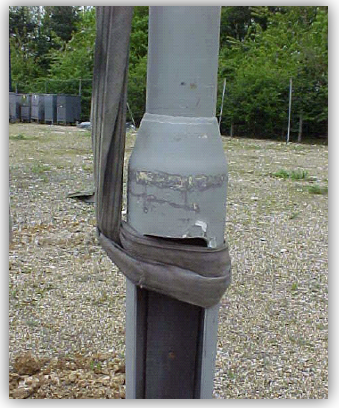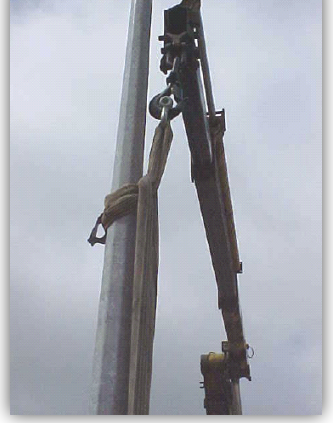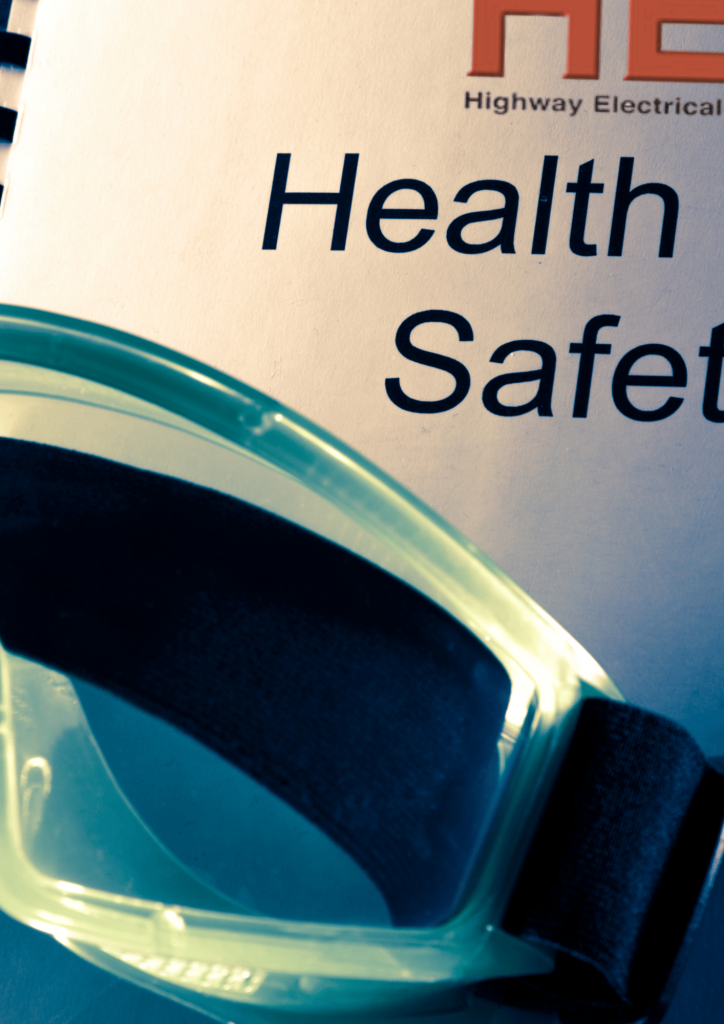A Persistent Safety Gap in Highway Lighting
Across the highway lighting industry, one safety issue continues to cause concern: the inconsistent and sometimes unsafe slinging of lighting columns during lifting operations. Despite improvements in other areas of health and safety, column lifting remains a weak point. These inconsistencies increase the risk of serious accidents, near misses and equipment damage. It is time for the industry to take collective action to improve standards before a serious incident occurs.
Recent Incidents Highlight the Risks
Several recent incidents have shown why this issue must be addressed. In one lifting operation in Gloucester, a street lighting column slipped free during hoisting. In another, in Shrewsbury, a column swung out of control and struck an operative in the lower back, causing injury. Both incidents, while anonymised here, share the same root cause: poor slinging and a lack of control of the load.
There are also recorded cases elsewhere where synthetic slings have slipped off columns or fixtures, resulting in dropped loads. These examples make clear that inconsistent slinging practices continue to expose operatives to unnecessary danger.
Unsafe Practices Still Being Seen
This issue is not limited to site operations. During the review of NVQ assessment videos, lighting columns were seen being lifted using a single short strop and one guide rope. As the column was raised, it began to swing and rotate in the air with very limited control. A single short sling positions the column almost vertically, giving a high centre of gravity and increasing the likelihood of uncontrolled movement.
In these situations, even an experienced operative struggles to stabilise the column, and the risk to the team on the ground increases significantly. These are not isolated cases; they are common across the industry and often go unchallenged.

Lack of Detail in Method Statements
A key reason for unsafe practice is the lack of clarity in many contractors’ method statements. Often, these documents include little more than a line stating “lift column into position” without specifying where to attach slings, what type of sling to use, or how to control the load.
In some cases, different crews within the same organisation use completely different methods. Some rely on a single chain or strap; others use two slings but in incorrect positions. This inconsistency means that safety on site depends heavily on individual experience, rather than a recognised industry approach.
If we expect crews to work safely, they must be given clear and consistent instructions, supported by suitable training and visual guidance.


An example from ETL’s internal guidance showing double-sling configuration.
The Case for a National Standard
The most effective way to achieve consistency would be through a model minimum standard for slinging lighting columns, developed and endorsed by the Highway Electrical Association (HEA). This would not be a precedent, but a benchmark similar to how ENA G39 set expectations for electrical safety and PPE.
A model standard could include:
- Approved slinging configurations, such as the use of a long and short sling in a double-choke arrangement to balance and control the column.
- Minimum equipment specifications, defining sling types, materials, and acceptable sling angles.
- Integration into training, ensuring all NVQ, HERS and apprenticeship programmes teach the same recognised method.
- Client and contractor adoption, allowing method statements to reference the national standard, ensuring consistency across the sector.

Such a standard would provide a safety baseline for all organisations, while still allowing flexibility for site-specific adaptations. It would also give site operatives and supervisors the confidence to challenge unsafe lifting setups.
Constructive Next Steps
This proposal is not about criticising individual contractors. It is about encouraging the industry to work together before a serious incident occurs. To take this forward, the following actions are suggested:
- The HEA Safety Committee could form a small working group to review incident data, current lifting practices, and equipment guidance.
- Draft guidance could then be produced, supported by photographs and diagrams to make it practical for site use.
- Contractors could update their internal procedures to align with the new standard once published.
- Training providers could embed the guidance into their delivery, ensuring the next generation of operatives learn the correct methods from the outset.
With industry-wide collaboration, this could be achieved quickly and effectively.

Conclusion: A Call to Action

Safety standards are often written after incidents occur. In this case, the industry has a chance to act before that happens. By developing and adopting a national standard for lighting column slinging, the highway electrical community can remove uncertainty, promote consistent practice, and protect those who work on our roads every day.
The HEA, as the recognised trade body for our sector, is ideally placed to lead this initiative. Working together, we can ensure every lighting column is lifted safely, confidently, and consistently – before a preventable accident forces change.

